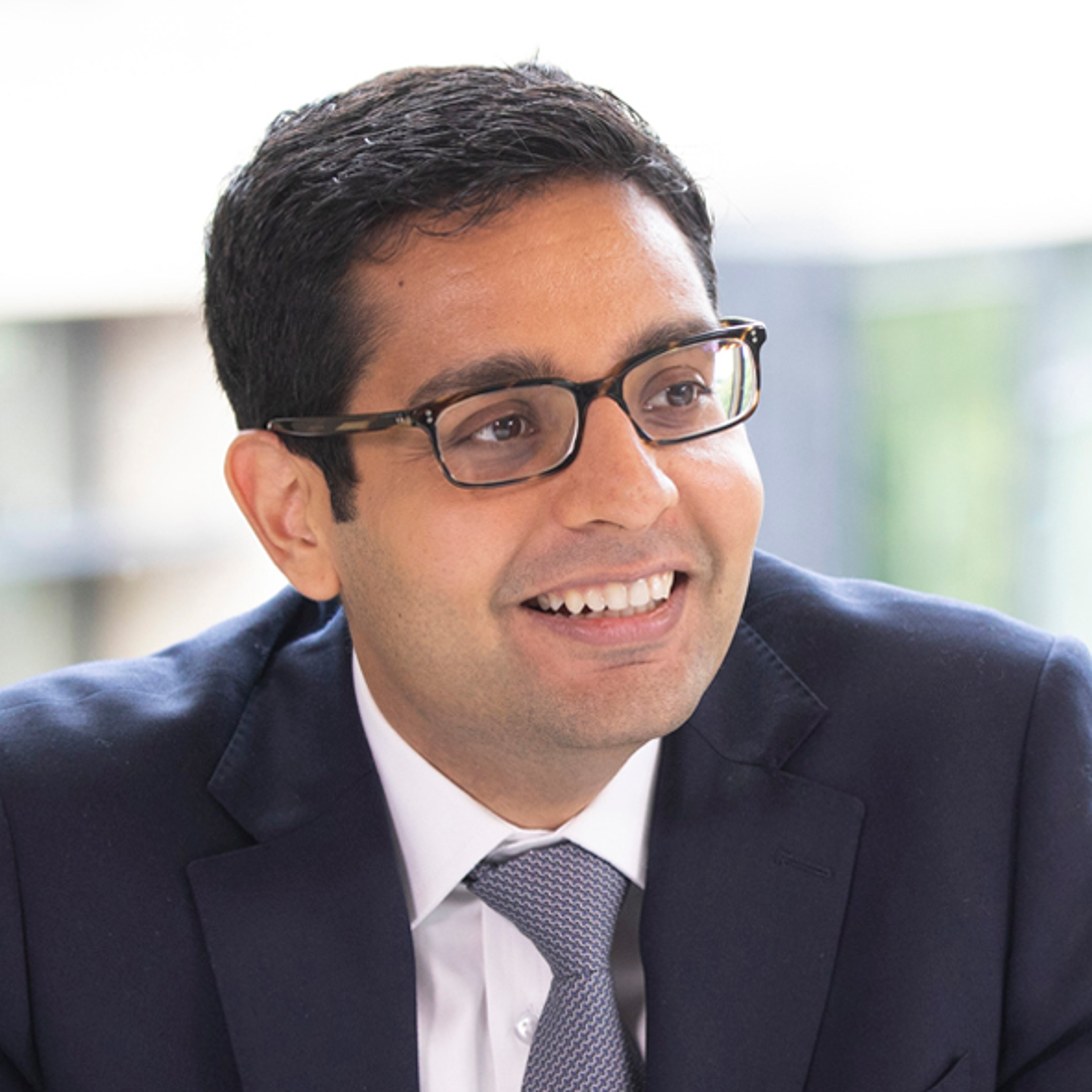
Investors should carefully consider the objectives, risks, charges and expenses of the Fund before investing. This information and other information about the Fund can be found in the prospectus and summary prospectus. For a prospectus or summary prospectus please visit our website at https://usmutualfund.bailliegifford.com. Please carefully read the Fund’s prospectus and related documents before investing. Securities are offered through Baillie Gifford Funds Services LLC, an affiliate of Baillie Gifford Overseas Limited and a member of FINRA.
There’s a two-hour flight from Beijing to Pyongyang that transports you decades back in time. I once boarded it for a weeklong trip to North Korea. Nothing in the city had changed since about 1950. The five-lane highway to the hotel had more people dragging suitcases than cars. The elevators, the subway trains, the televisions: everything looked to me like it belonged in a museum. Decades of isolation from much of the world had seemingly halted progress, leaving the country frozen in a kind of time bubble.
But North Korea is an exception. While visiting other places may also evoke a sense of having jumped back through the years, there’s typically a perception that things are changing and, to a certain extent, catching up. And this gives rise to the use of ‘time travel’ as a tool when looking for promising investments in emerging markets – observing the state of play and then mentally jumping ahead to how conditions are likely to develop based on experiences from elsewhere.
Advancing countries lie on a spectrum of growth. At one end are poor nations like Malawi. At the other is South Korea, which was recently formally reclassified as being a ‘developed economy’ by the UN Conference on Trade and Development. By looking at how those towards the richer end got to that position, we can sometimes get a glimpse of the others’ future. So if South Korea today is what India might look like in 30 years’ time, understanding its growth journey can help us predict how India might change.

Past performance
Similar thinking is often applied within countries too. When sizing the market opportunity for companies like Meituan and Zomato, which provide food delivery services in China and India, we look at how things played out in the larger, more advanced cities to predict what might happen in smaller towns as they mature.
This type of thinking can work. As per capita income rises, there is a relatively predictable sequence of things people want: heating, then branded shampoos, then smartphones, then insurance etc. Having seen this sequence unfold in other countries or cities helps us predict how strong consumer brands might perform as they expand to new markets.
Infrastructure also follows a pattern. As countries grow they need more roads, ports and energy. We had observed the rollout of city gas networks in China, and judged India to be at an earlier stage of a similar expansion. Within three years, Indraprastha, an Indian gas distributor, saw its shares almost double in price.
So forecasting the future by mapping one place’s progress to another can pay off. But it can also mislead when an emerging market diverges from the path followed by its more developed counterparts.
Online shopping illustrates this danger. Ecommerce penetration in China, for instance, reached Western levels but then kept rising. This was driven by the sprawling size and congestion of Chinese cities and the absence of a well-developed physical retail infrastructure. As Alibaba’s founder Jack Ma put it, ecommerce was the ‘dessert’ in the US, where retailers like Wal-Mart existed, but the ‘main course’ in China, where they did not. Analysts who fixated on developed markets missed this nuance and the outsized returns it unlocked.

Emerging nation champions
In fact, this type of deviation from past growth is becoming increasingly common. In the second half of the 20th century, the US and Japan drove many of the most disruptive innovations. New technologies were born in places like Bell Labs in New Jersey, HP’s offices in Silicon Valley and Sony’s Tokyo research centre before spreading out to the world. You could essentially predict the rise of new industries in emerging markets from their rate of diffusion from more developed nations.
That has changed. Samsung and TSMC, for instance, are no longer the poor man’s Apple or Intel. The South Korean and Taiwanese firms are on the bleeding edge of research.
Across industries like ecommerce, digital payments, social media and gaming, firms like Korea’s Kakao, Brazil’s Stone, India’s Josh and Poland’s CD Projekt are setting the standard for innovation. Their prospects can no longer be predicted by simple reference to their Western peers.
The nature of innovation itself is also changing. Emerging economies face unique challenges. A new generation of technology firms are now solving these local problems and then exporting their learnings to the rest of the world.
Take Lenskart. This Indian eyecare company is tackling a huge problem: hundreds of millions of Indians have poor eyesight but very few can afford glasses. Lenskart reengineered vision testing, and how glasses and lenses are made. It has thus dramatically reduced the cost of vision correction and won a large share of India’s eyecare market. Now, having honed its craft in India’s challenging terrain, the firm is taking the fight to global giants like Luxottica with a target of becoming the top-selling eyeware platform in Southeast Asia and the Middle East by 2023.
Meesho is another company solving a local challenge. This Indian ecommerce start-up blends the business models of Shopify and Pinduoduo to bring online shopping to poorer Indians. One of its growth engines is the large proportion of highly motivated female resellers. Only 21 per cent of Indian women work in the formal economy, according to the World Bank. Many of the young, ambitious ones who don’t have started small businesses on social media. Meesho saw an opportunity to help them and, as a result, grew from three million resellers last year to more than 15 million today. Only in an economy with such a large, ambitious and underused labour pool could Meesho have grown that fast.
So time travel as an investment tool can be a useful but blunt instrument. As emerging economies forge very different paths forward, we have to be even more selective in applying it. It will take ever more creativity and imagination to predict the future and that makes emerging markets investing more difficult, but also more exciting and, perhaps, more lucrative.
Risk factors
This content contains information on investments which does not constitute independent research. Accordingly, it is not subject to the protections afforded to independent research and Baillie Gifford and its staff may have dealt in the investments concerned.
Any stock examples, or images, used in this content are not intended to represent recommendations to buy or sell, neither is it implied that they will prove profitable in the future. It is not known whether they will feature in any future portfolio produced by us. Any individual examples will represent only a small part of the overall portfolio and are inserted purely to help illustrate our investment style.
As with all mutual funds, the value of an investment in the fund could decline, so you could lose money.
The most significant risks of an investment in the Baillie Gifford Emerging Markets Equities Fund or the Baillie Gifford Asia Ex Japan Fund are Investment Style Risk, Growth Stock Risk, Long-Term Investment Strategy Risk, Geographic Focus Risk, Emerging Markets Risk and Asia Risk. The Fund is managed on a bottom up basis and stock selection is likely to be the main driver of investment returns. Returns are unlikely to track the movements of the benchmark. The prices of growth stocks can be based largely on expectations of future earnings and can decline significantly in reaction to negative news. The Fund is managed on a long-term outlook, meaning that the Fund managers look for investments that they think will make returns over a number of years, rather than over shorter time periods. The Fund focuses on investments in a limited number of countries or regions, meaning it may offer less diversification and be more volatile than other funds. Investing in emerging markets can involve additional market, credit, currency, liquidity, legal or political risks than investing in more developed markets. Some Asian securities may be less liquid than US or other foreign securities. They can be affected by high inflation, currency fluctuations, political instability and less efficient markets. Many Asian economies are dependent on international trade and only a few industries and can be badly affected by trade barriers. Other Fund risks include: China Risk, Conflicts of Interest Risk, Currency Risk, Equity Securities Risk, Frontier Markets Risk, Government and Regulatory Risk, Information Technology Risk, IPO Risk, Large-Capitalization Securities Risk, Liquidity Risk, Market Disruption and Geopolitical Risk, Market Risk, Non-U.S. Investment Risk, Service Provider Risk, Settlement Risk, Small-and Medium-Capitalization Securities Risk, and Valuation Risk. Additionally, for the Baillie Gifford Emerging Markets Equities Fund, Focused Investment Risk and Underlying Funds Risk. For the Baillie Gifford Asia ex Japan Fund, New and Smaller-Sized Funds Risk.
For more information about these and other risks of an investment in the funds, see “Principal Investment Risks” and “Additional Investment Strategies” in the prospectus. The Baillie Gifford Emerging Markets Equities Fund seeks capital appreciation. The Baillie Gifford Asia ex Japan Fund also seeks capital appreciation. There can be no assurance, however, that the fund will achieve its investment objective.
The funds are distributed by Baillie Gifford Funds Services LLC. Baillie Gifford Funds Services LLC is registered as a broker-dealer with the SEC, a member of FINRA and is an affiliate of Baillie Gifford Overseas Limited.
All information is sourced from Baillie Gifford & Co and is current unless otherwise stated.
The images used in this article are for illustrative purposes only.
|
Holdings |
Fund % |
|
TSMC |
9.2 |
|
Samsung Electronics |
5.9 |
|
Alibaba |
4.3 |
|
Petrobras |
4.3 |
|
Tencent |
4.0 |
|
Reliance Industries |
3.9 |
|
Sberbank |
3.9 |
|
Norilsk Nickel |
2.6 |
|
HDFC |
2.5 |
|
China Merchants Bank |
2.4 |
|
Holdings |
Fund % |
|
SEA Limited |
7.1 |
|
TSMC |
4.1 |
|
JD.com |
2.9 |
|
Samsung SDI |
2.8 |
|
Reliance Industries |
2.8 |
|
Tata Motors |
2.6 |
|
Samsung Electronics |
2.6 |
|
MMG Limited |
2.4 |
|
Hoa Phat Group |
2.3 |
|
Vedanta |
2.2 |
It should not be assumed that recommendations/transactions made in the future will be profitable or will equal performance of the securities mentioned. A full list of holdings is available on request. The composition of the fund's holdings is subject to change. Percentages are based on securities at market value.
12352 10004164





